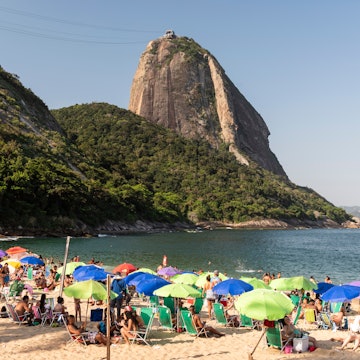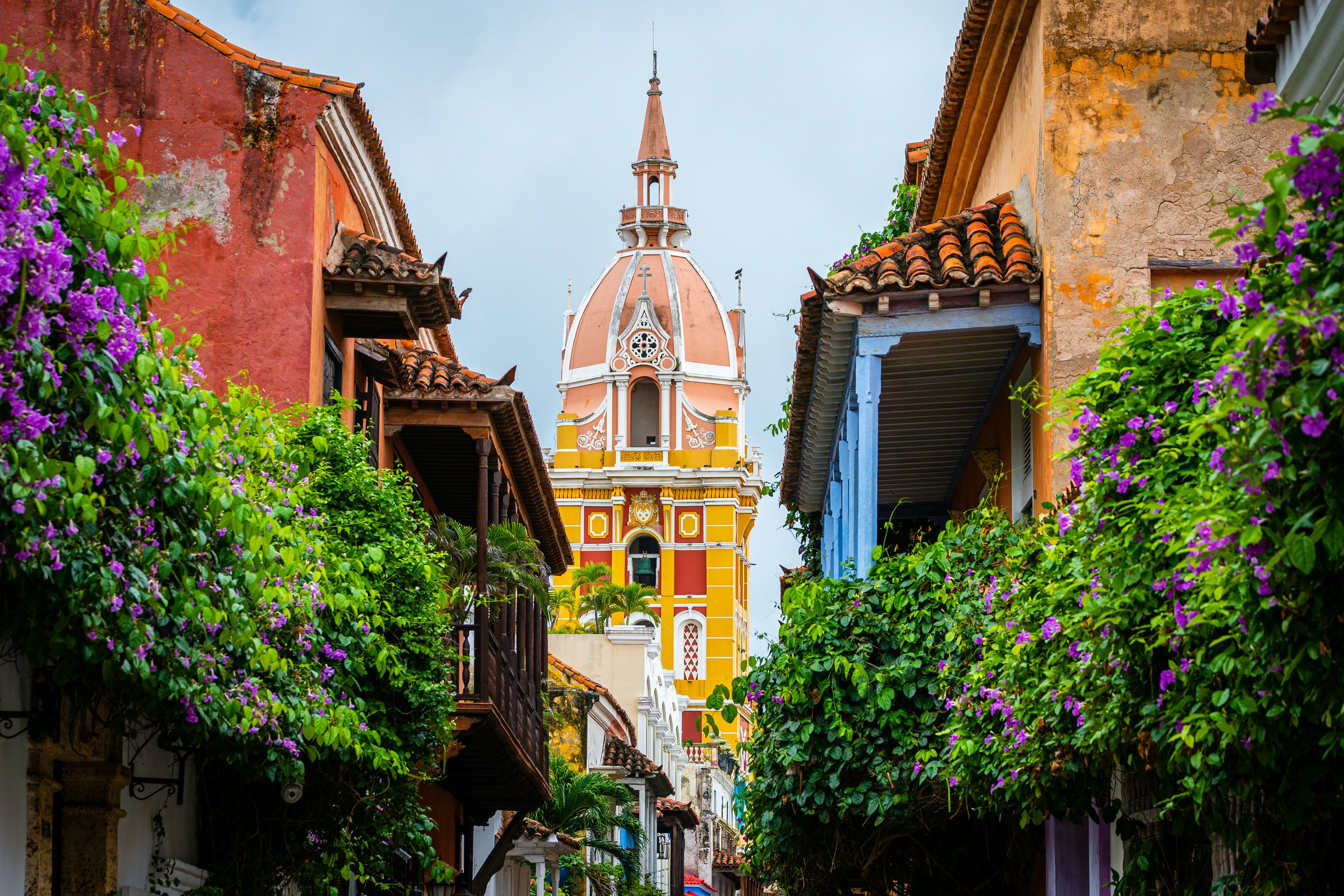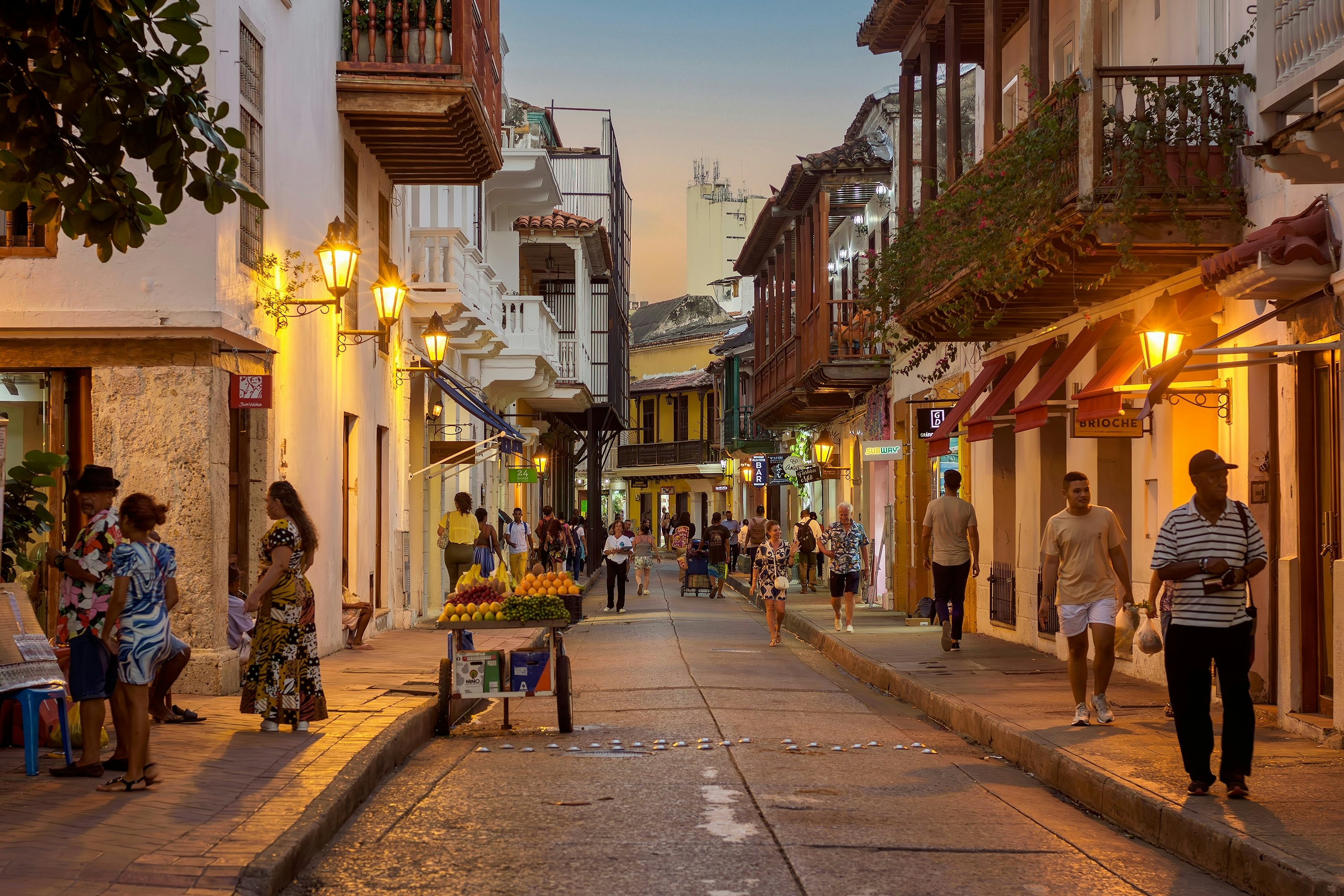

Here’s how to make the most of a long weekend in Cartagena. Juan Tapias for Lonely Planet
Cartagena – Colombia’s historic fortified city on the Caribbean Sea – exudes a crumbling grandeur with faded pastel facades and imposing stone fortresses. Its Old Town architecture may be rooted in history, but Cartagena also pulses with raw modern energy, born from a cultural fusion of African, Indigenous and European influences. You can see it in the lively plazas, taste it in trendy restaurants and cafes and hear it in the salsa clubs that stay open long into the night.
I’m drawn to Cartagena repeatedly by its heritage and heart, not to mention the nearby sun-kissed Caribbean beaches, where my Bogotá-born daughter touched the Caribbean Sea for the first time. These memories mingle with the promise of new adventures on the Colombian coast.
Here’s what you need to know for a trip to Cartagena.
When to arrive: Cartagena is at its liveliest Thursday to Saturday when the city’s clubs, plazas and rooftops are buzzing with action. If nightlife is a priority, plan your trip to include at least one weekend night.
How to get from the airport: Rafael Núñez International Airport is a 15-minute ride from Cartagena’s historic center. In 2025, an official taxi to the Old Town costs COP$17,800, with additional fees added late at night. Ride-share apps, such as Uber or InDrive, are also available.
Getting around town: Walking is the best way to get around Cartagena’s historic center, which includes the Walled City and Getsemaní. Otherwise, taxis are plentiful and convenient. Official fares are set by legal decree, but it’s best to confirm the price before getting in.
Where to stay: Getsemaní is a backpacker hub, with graffiti-splashed hostels and colorful guesthouses. Try Viajero Cartagena or Los Patios Hostel. Expect to pay more within the stone walls of Old Town. The midrange rooms at Townhouse are filled with colorful murals by Colombian artists. For travelers willing to splurge, Casa de Alba and Hotel Casa San Agustín are atmospheric boutique hotels with hidden plunge pools.
What to pack: Cartagena is hot year-round, so think lightweight clothes. Bring sandals or flip-flops for the beach, but sturdier walking shoes make walking on uneven sidewalks and cobblestones easier. Protect yourself from the blazing sun with a wide-brimmed hat, sunglasses and reef-safe sunscreen.

Day 1
Hit the ground running with a day dedicated to exploring the heart of the centuries-old historic center shaped by military conquest and wealth accrued from the transatlantic trade in gold, silver, emeralds and enslaved Africans.
Morning
If you’re an early riser like I am, the streets of Old Town offer a rare calm in the morning before the city stirs to life — an ideal moment to wander with a camera, free from crowds and the heat of the day. The trade-off? Most shops and eateries don’t open until around 10am, though a few cafes welcome guests earlier.
Época Café Bar opens at 7:30am for that first hit of Colombian-grown coffee alongside flavorful breakfast specialties. Café San Alberto in the Plaza Santa Domingo begins pouring its award-winning coffee from its own finca in Colombia’s coffee region at 9am.

How to spend the day
Spend the day wandering between plazas, stopping in shady courtyards and peering into cavernous churches. The area around the Plaza de Bolívar is where the city’s elite built mansions adorned with balconies featuring carved-wood details. Most have been turned into boutique hotels, shops, cafes, restaurants and museums worthy of a visit..
Break for a reasonably priced lunch at La Mulata, a solid local favorite in the San Diego neighborhood. The daily set menu called a comida corriente – the most economical choice – comes with soup, the chosen main course, usually fish, and housemade limonada de coco (coconut limeade). I make the drink back home to give me a taste of the Caribbean when I’m not in Colombia.

In the late afternoon, gravitate toward the top of the walls that ring the city. The Baluarte de Santo Domingo was once home to the famous Café del Mar, but it closed permanently in 2024. The overpriced drinks may be a thing of the past, but the tangerine-tinged sunset views over the Caribbean Sea remain.
Dinner
For an elevated dining experience, the atmospheric rooftop restaurant Mar y Zielo is renowned for its creative take on Colombian gastronomy, whether it be seafood dishes or the tender stewed goat in creole sauce inspired by semi-nomadic goat herders that inhabit La Guajira 400 miles northwest of Cartagena. Candé is a livelier option, where regional specialties, seafood and game meat come with a side of music and dance after 9pm.

After dark
Old Town’s plazas become the main stage for vendors, street performers and colorful characters when night falls. Join the locals and enjoy the lively ambiance or watch the action from a higher vantage point while sipping on classic cocktails at the Mirador Gastro Bar overlooking the illuminated clock tower. There are several other bars and clubs in the vicinity, including Alquímico, named one of the best bars in the world in 2024. Alternatively, pick up a few dance moves at Donde Fidel, the temple of salsa music.
Day 2
The vibrance of Cartagena continues beyond Old Town’s walls and spills over into the colorful streets and alleys of neighboring Getsemaní. In the colonial era, the enclave was home to the people who kept Cartagena running – artisans, freed slaves and working-class laborers. It’s since become the city’s artistic hub with an authentic Cartagenero character that hangs on tightly even as the neighborhood morphs into one of the city’s trendiest districts.
Morning
Rise and shine early to visit the Castillo San Felipe de Barajas, the imposing fortress looming large outside the city walls. The UNESCO World Heritage Site – the largest fortification built by the Spanish in the Americas – opens at 7am, an ideal time to beat the heat and the crowds. Afterwards, Libertario Coffee Roasters in Getsemaní will be serving specialty coffees, pastries and hardy egg casseroles.

How to spend the day
Soak up the creative community spirit that makes Getsemaní one of Cartagena’s most interesting. Follow the flutter of flags down Calle 29, known as Calle de la Sierpe. The crumbling walls on either side of the street are splashed with bold portraits and imaginative street art all the way to the Plaza de la Trinidad, a lively public square where plans for a revolution against Spain were once shared.
More murals await along the Calle de San Juan, home to Arte Getsemaní, where local artists hang their canvases for sale outside, transforming the street into an open-air art gallery. Lose yourself in more narrow side streets and alleyways, where playful decorations have turned nondescript streets into landmark destinations.
When it’s time for lunch, a long-time favorite is La Cocina de Pepina. The lunch-only establishment serves traditional home-cooked dishes, such as posta Cartagenera, a slow-cooked beef in a rich dark sauce or mote de queso, a soup made with yam and cheese found in the coastal region..
Still have energy to burn in the late afternoon? Take a three-hour rooftop class with Real Experience Cartagena. The professional instructor teaches salsa, bachata and Afro-Colombian champeta. You’ll walk away dripping with sweat, but ready to conquer the dance floor with new moves and more confidence.
Dinner
Getsemaní’s creativity extends to its food scene, which is dominated by Celele, which takes advantage of Colombia’s bounty from the Amazon River to the Caribbean coast. Vegetarian and vegan dishes shine here, too. Another solid option is Sambal Bistro Caribeño, a newer restaurant with ingredients acquired from growers in the Montes de María, a region with a long history of conflict and violence.

After dark
The Plaza de la Trinidad fills with food carts and street performers, such as dancers swirling their skirts to cumbia or champeta. When you’re ready to show off a few dance moves you’ve learned in Cartagena, visit one of the city’s iconic salsa clubs, such as Café Havana – arguably the most famous (and often packed) option. Club de los Carpinteros offers a more intimate setting to enjoy the same infectious rhythms.
Day 3
Tour operators offer a variety of island-hopping adventures, snorkel and dive trips or relaxing day-passes to a single beach club or resort in the Islas del Rosario (Rosario Islands). On my most recent visit to the island chain, I signed up for Diving Planet’s snorkel tour, which includes two excursions, plus time for lunch and pooltime at Hotel Cocoliso on Isla Grande. It’s wise to reserve ahead as the top-reviewed tours fill up quickly.
Morning
Pick up a tinto, Colombia’s bold black coffee, plus a warm arepa de huevo (egg-stuffed arepas) or empanada from a street cart on your way to the marina. Most boats set off for Islas del Rosario usually leave between 8 and 9:30 am. when the sea is still.

How to spend the day
Settle into a shaded lounge chair at a beach club and cool-off with fresh coconut water or a coco loco – a seaside favorite mixed inside a cracked-open coconut shell with rum, tequila, vodka, coconut cream and fruit juice.
My favorite way to enjoy the islands is underwater, and a guide can point out marine critters you might otherwise miss, such as a camoflauged octopus munching on a coral head. On our last trip, my daughter and I were mesmerized by translucent medusas drifting silently past us. Thankfully, they’re harmless!
Lunch is usually a relaxed meal with fresh grilled (or fried) fish from the morning’s catch, served with coconut-infused rice, crisp-fried plantains, salad and soup. Spend the last couple of hours by the pool before boats return to Cartagena in the late afternoon. Once ashore, there’s time for a refreshing shower and maybe brief rest before dinner.
Dinner
Head back to the historic center for one last unforgettable meal at Restaurante Carmen Cartagena, tucked inside a candlelit colonial mansion. Choose from the chef’s tasting menu or a cut of dry-aged beef or pork prepared on “the devil’s grill.” Lunático in the Getsemaní neighborhood, specializes in fusing Mediterranean techniques with local Caribbean ingredients at a lower price point. The restaurant’s rooftop terrace overlooks the Castillo de San Felipe.
After dark
Filled with high-rise apartments, casinos and commercial shopping plazas, the neighborhood of Bocagrande gives you a totally different perspective of Cartagena. Order a nightcap at 51 Sky Bar, atop the Hotel Estelar – the city’s highest rooftop lounge, where you can watch the lights of Cartagena dance over lapping waves. Hasta la próxima visita, Cartagena... until we meet again.
















